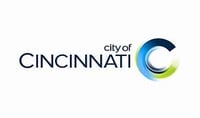Revolutionizing Construction: The Cincinnati Project

Discover effective error prevention techniques used by Mott McDonald to enhance project efficiency and minimize mistakes with Pegasus.
The Importance of Error Prevention in Project Management
Error prevention plays a crucial role in project management. By implementing effective error prevention techniques, organizations can enhance project efficiency and minimize mistakes. Errors in project management can lead to delays, increased costs, and compromised quality. Therefore, it is essential to prioritize error prevention throughout the project lifecycle.
One of the key benefits of error prevention is improved project success rates. When errors are prevented, projects are more likely to be completed on time and within budget. This not only increases client satisfaction but also enhances the organization's reputation.
.png?width=152&height=250&name=Untitled%20design%20(4).png) Error prevention also helps in maintaining consistency and quality. By identifying and addressing potential errors early on, organizations can establish standardized processes and procedures. This ensures that every project follows a consistent approach, leading to improved efficiency and reduced variability.
Error prevention also helps in maintaining consistency and quality. By identifying and addressing potential errors early on, organizations can establish standardized processes and procedures. This ensures that every project follows a consistent approach, leading to improved efficiency and reduced variability.
Furthermore, error prevention fosters a culture of continuous improvement. By analyzing past errors and implementing preventive measures, organizations can learn from their mistakes and enhance their project management practices. This not only reduces the likelihood of similar errors in the future but also promotes innovation and growth.
In conclusion, error prevention is a critical aspect of project management. By prioritizing error prevention techniques, organizations can enhance project efficiency, minimize mistakes, and improve overall project success rates.
Mott McDonald's Error Prevention Framework
Mott McDonald, a leading global engineering and development consultancy, has developed an effective error prevention framework to ensure project success. Their framework consists of a set of systematic processes and procedures that aim to identify and prevent errors throughout the project lifecycle.
One of the key components of Mott McDonald's error prevention framework is proactive risk management. They carefully assess potential risks and develop strategies to mitigate them. This includes identifying potential errors, analyzing their impact, and implementing preventive measures.

Another crucial aspect of their framework is effective communication and collaboration. Mott McDonald emphasizes open and transparent communication among project team members to ensure that errors are identified and addressed promptly. This includes regular project meetings, clear documentation, and effective knowledge sharing.
Additionally, Mott McDonald focuses on continuous training and education to build a skilled workforce. They provide comprehensive training programs to ensure that their employees have the necessary knowledge and skills to prevent errors. By investing in their workforce, Mott McDonald ensures that error prevention becomes ingrained in their organizational culture.
Overall, Mott McDonald's error prevention framework is a comprehensive approach that integrates proactive risk management, effective communication, and continuous training. This allows them to minimize errors, enhance project efficiency, and deliver high-quality results.
Training and Education: Building a Skilled Workforce
Training and education play a vital role in error prevention. By building a skilled workforce, organizations can ensure that their employees have the necessary knowledge and skills to identify and prevent errors.
Mott McDonald recognizes the importance of training and education in error prevention. They provide comprehensive training programs to their employees, covering various aspects of project management and error prevention techniques. These programs include both theoretical knowledge and practical application, equipping employees with the necessary tools to prevent errors.
and error prevention techniques. These programs include both theoretical knowledge and practical application, equipping employees with the necessary tools to prevent errors.
Additionally, Mott McDonald encourages continuous learning and professional development. They provide opportunities for employees to attend industry conferences, workshops, and seminars, where they can learn about the latest trends and best practices in error prevention. By staying updated with industry advancements, Mott McDonald's workforce remains well-equipped to prevent errors effectively.
Moreover, Mott McDonald promotes a culture of knowledge sharing and collaboration. They encourage their employees to share their experiences and lessons learned from past projects, facilitating the transfer of knowledge and best practices across the organization. This collective knowledge helps in identifying potential errors and implementing preventive measures.
In conclusion, training and education are essential in building a skilled workforce that can effectively prevent errors. By investing in training programs and promoting continuous learning, organizations can enhance their error prevention capabilities and improve project outcomes.
Standard Operating Procedures: Establishing Consistency
Standard operating procedures (SOPs) are crucial in error prevention as they establish consistency and uniformity in project management processes. SOPs provide a clear set of guidelines and instructions for project team members to follow, minimizing the risk of errors.
Mott McDonald recognizes the importance of SOPs in error prevention and has established a robust set of procedures. These SOPs cover various aspects of project management, including planning, execution, monitoring, and control. By following these standardized procedures, Mott McDonald ensures that every project is executed consistently and efficiently.

One of the key benefits of SOPs is that they reduce variability and increase predictability. When project team members adhere to established procedures, there is less room for errors and deviations. This leads to improved project outcomes and client satisfaction.
Furthermore, SOPs enable effective communication and collaboration among project team members. By providing a common framework and language, SOPs facilitate clear communication and coordination. This minimizes misunderstandings and ensures that everyone is on the same page, reducing the likelihood of errors.
In conclusion, standard operating procedures are essential in establishing consistency and minimizing errors. By implementing SOPs, organizations like Mott McDonald can ensure that every project follows a standardized approach, leading to improved efficiency, reduced variability, and enhanced error prevention.
Quality Control Measures: Ensuring Accuracy
Quality control measures play a critical role in error prevention by ensuring accuracy and adherence to project requirements. By implementing effective quality control measures, organizations can identify and address errors before they impact project outcomes.
Mott McDonald emphasizes the importance of quality control in error prevention. They have established a comprehensive quality control framework that includes regular inspections, audits, and reviews at various stages of the project. This allows them to identify potential errors early on and take corrective actions.
One of the key components of Mott McDonald's quality control measures is continuous monitoring and evaluation. They track project progress, performance, and deliverables to ensure that they meet the required standards. This includes conducting regular quality checks, reviewing documentation, and verifying compliance with project specifications..png?width=239&height=200&name=Beige%20New%20Product%20Mockup%20Now%20Available%20Facebook%20Post%20(2).png)
Additionally, Mott McDonald encourages a culture of accountability and responsibility. They empower their employees to take ownership of the quality of their work and actively participate in quality control activities. This ensures that errors are identified and addressed promptly, minimizing their impact on project outcomes.
In conclusion, quality control measures are essential in ensuring accuracy and preventing errors. By implementing a robust quality control framework, organizations like Mott McDonald can proactively identify and address potential errors, enhancing project outcomes and client satisfaction.
Error Analysis and Continuous Improvement
Error analysis and continuous improvement are crucial aspects of error prevention. By analyzing past errors, organizations can identify their root causes and implement preventive measures to avoid similar mistakes in the future.
Mott McDonald recognizes the importance of error analysis and continuous improvement. They conduct thorough investigations whenever errors occur, aiming to understand their underlying causes. This includes analyzing project documentation, reviewing communication records, and conducting interviews with project team members.
Ready To Get Started?
Easy to use construction management software for quick deployment and quicker results.
Based on the findings of error analysis, Mott McDonald implements corrective actions and preventive measures. They update their SOPs, provide additional training to employees, and establish new quality control measures to avoid similar errors in the future. This continuous improvement approach ensures that errors are learning opportunities and catalysts for positive change.
Moreover, Mott McDonald encourages a culture of innovation and knowledge sharing. They actively promote the exchange of lessons learned from past projects, ensuring that valuable insights are disseminated throughout the organization. This collective learning helps in preventing errors and driving continuous improvement.
In conclusion, error analysis and continuous improvement are vital in error prevention. By analyzing past errors and implementing preventive measures, organizations like Mott McDonald can enhance their project management practices, minimize mistakes, and improve overall performance.
Share this post:





